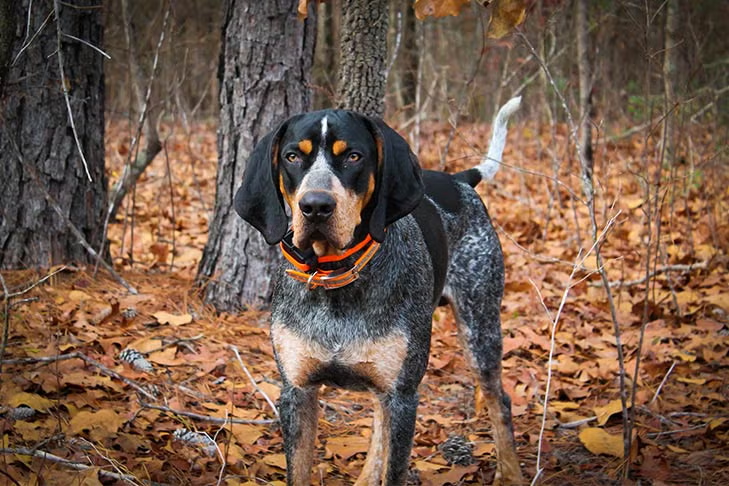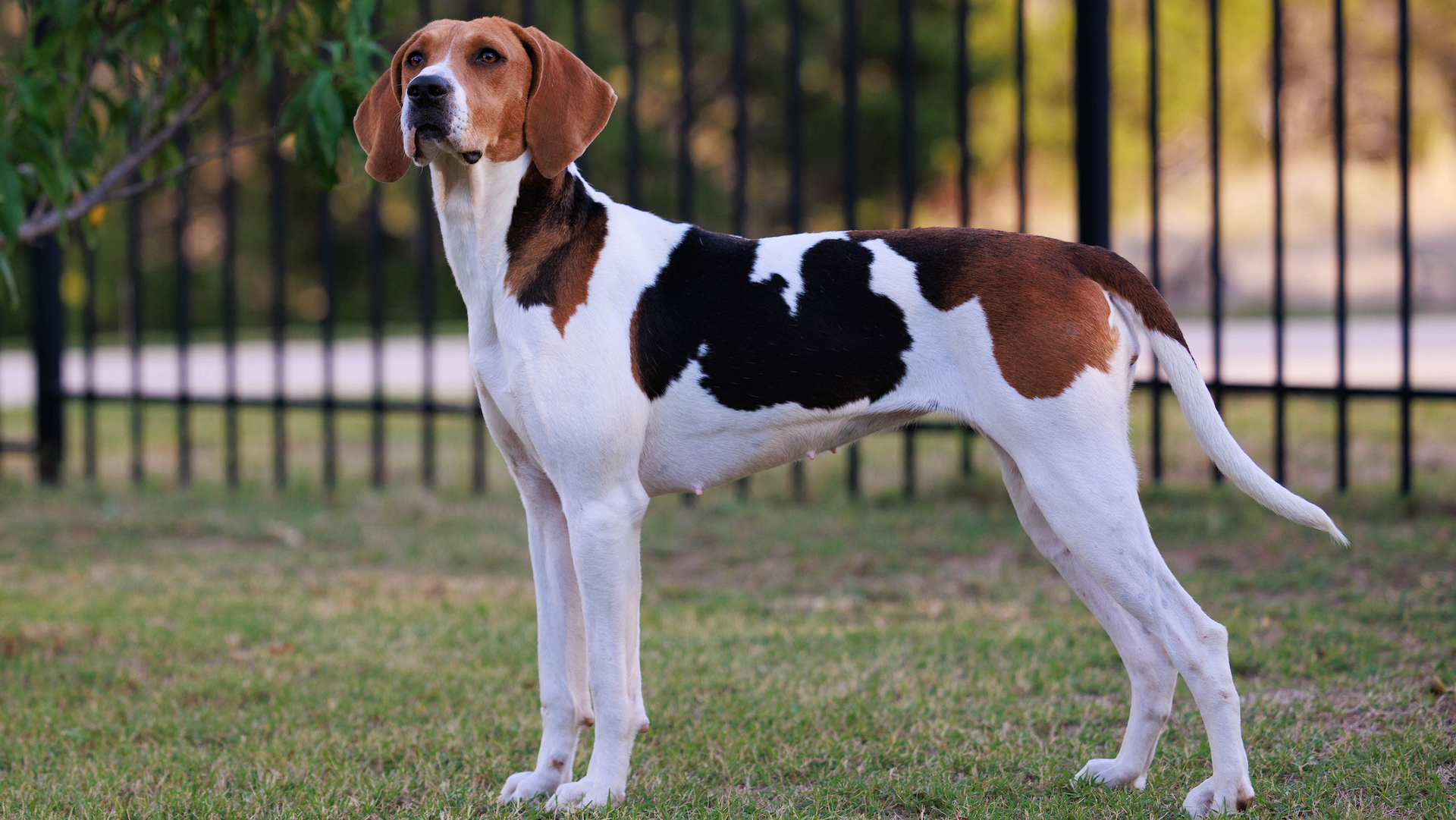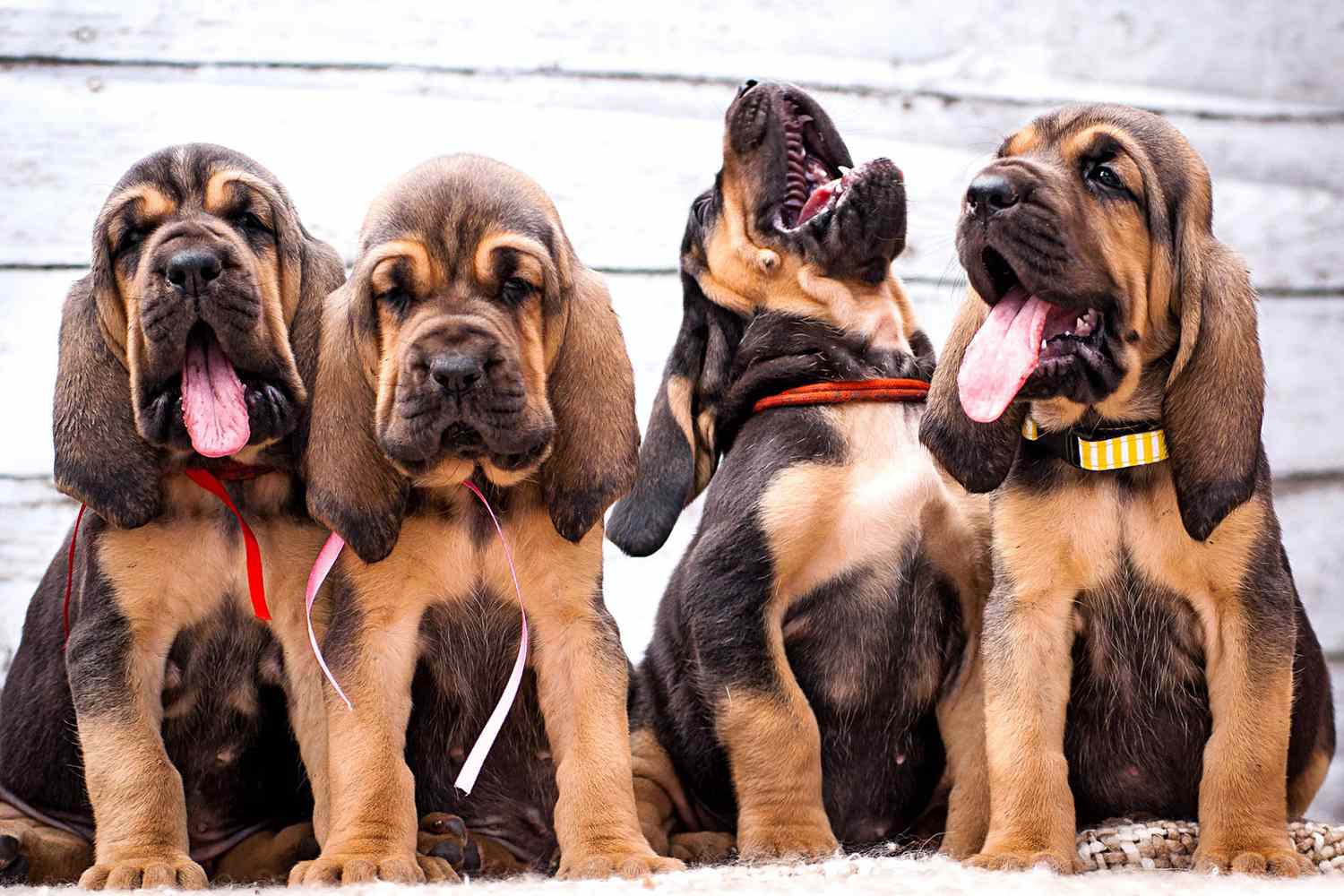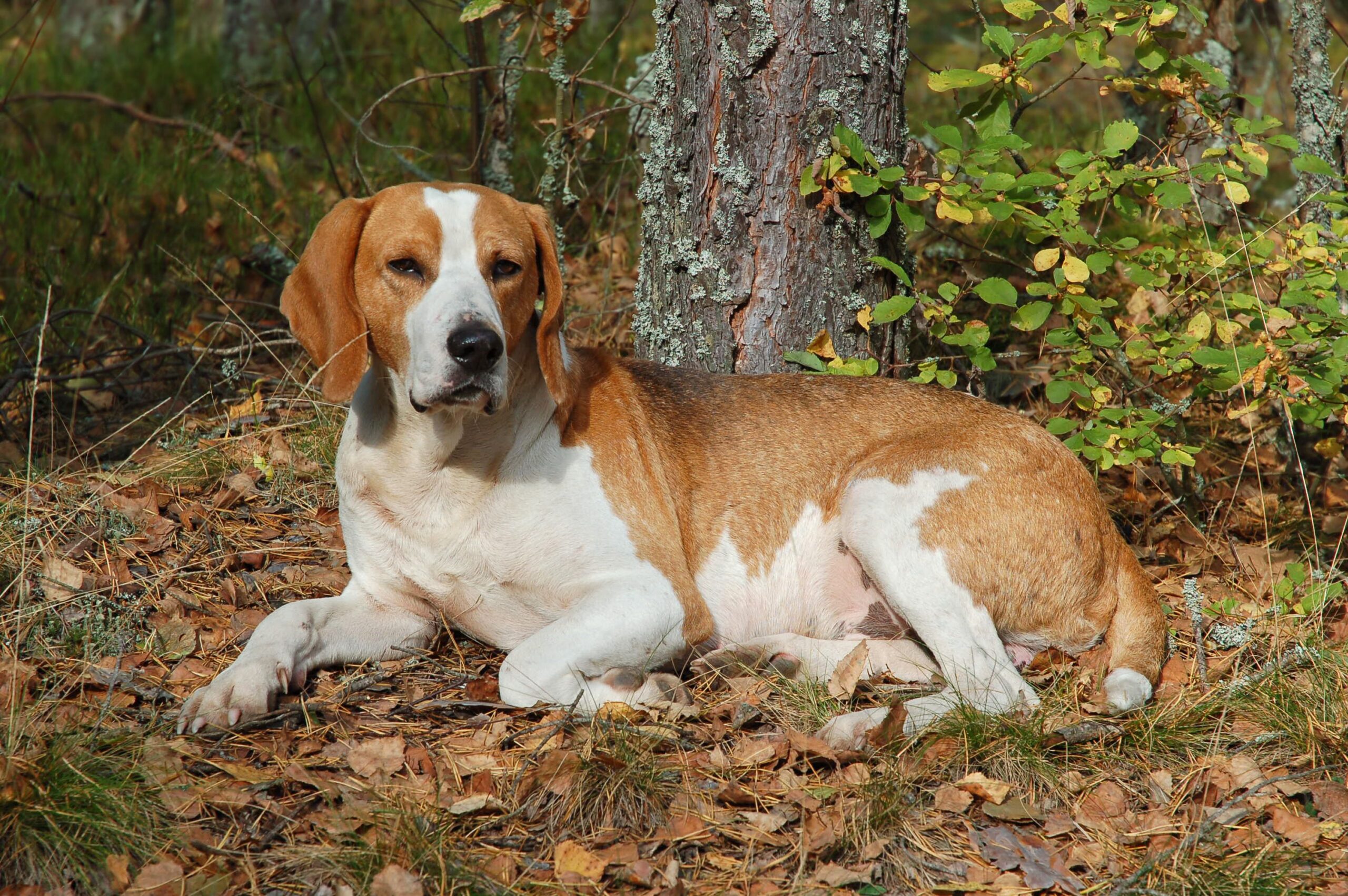My Journey Into Bluetick Obsession (And Why You Might Join Me)
The first time I locked eyes with a Bluetick Coonhound at my local dog park, I literally did a double-take. That stunning blue-ticked coat, those soulful eyes, and that laid-back Southern swagger had me completely captivated. But what truly sealed the deal was hearing their iconic bay – that melodious, deep howl that seems to resonate straight through to your soul. I was hooked immediately and found myself going down a total Bluetick rabbit hole that night.
If you’ve ever spotted one of these gorgeous hounds – maybe you’ve seen them in movies like “Where the Red Fern Grows,” or perhaps you’re a “Big Bang Theory” fan who fell in love with Sheldon’s childhood dog “Sassy” – you probably understand the appeal. There’s something undeniably special about Blueticks that captures the imagination and heart in equal measure.
Whether you’re considering adding one of these striking dogs to your family, fascinated by their legendary scenting abilities, or just curious about different dog breeds, I’ve put together the ultimate guide to Bluetick Coonhounds. From their rich hunting heritage to what they’re actually like as family companions (spoiler alert: they’re absolute sweethearts with some very specific quirks), we’ll cover everything you need to know about these charismatic canines. So grab your favorite beverage, get comfy, and let’s dive deep into the wonderful world of Bluetick Coonhounds!
Southern Heritage: The Fascinating History of Bluetick Coonhounds
To really understand what makes Blueticks tick (pun totally intended), we need to appreciate where they came from, because their history explains so much about their personality and traits.
From French Kings to American Frontiers
The Bluetick’s story begins, surprisingly, in France. Their ancestors were the Grand Bleu de Gascogne hounds, prized by French nobility for hunting. These impressive scent hounds made their way to America with early settlers, where they were crossed with various English foxhounds and other hound types to create dogs better suited to the American wilderness and its unique hunting challenges.
George Washington himself was reportedly a fan of these early American hounds, which would eventually develop into several distinct coonhound breeds. The Bluetick as we know it today was refined in the southern United States, particularly in the Appalachian, Blue Ridge, and Smoky Mountain regions, where they were prized for their ability to track and tree raccoons through difficult terrain.
While they’ve been a distinct type since the late 1700s, Blueticks weren’t officially recognized as a separate breed by the American Kennel Club until 2009. Before that, they were considered a variety of English Coonhound. Interestingly, the University of Tennessee adopted the Bluetick as their mascot (“Smokey”) in 1953, decades before the AKC recognition, showing just how beloved these dogs have been in Southern culture.
From Working Hounds to Family Companions
Traditionally, Blueticks were purely working dogs, valued for their hunting abilities rather than as companions. They would work in packs, often hunting throughout the night when raccoons are most active. Their distinctive baying voice allowed hunters to follow them from a distance, particularly in the dense forests where visibility was limited.
Today, while many Blueticks still work as hunting dogs, they’ve also found their place as family pets. Their transition to companion animals has revealed their affectionate nature and loyalty, traits that were always there but perhaps secondary to their working abilities in the past.
Competitive coonhound events remain popular in many parts of rural America, with top hunting Blueticks commanding impressive prices. The tradition of night hunting with coonhounds is an important cultural practice in many Southern communities, passed down through generations and celebrated in events like field trials and “nite hunts.”
That Gorgeous Coat: Understanding Bluetick Appearance
Blueticks are strikingly beautiful dogs with a distinctive appearance that turns heads wherever they go. Let’s break down their physical characteristics and what makes them so recognizable.
Size, Build, and Overall Appearance
Bluetick Coonhounds are medium to large dogs with an athletic build designed for stamina rather than speed. Males typically stand 22-27 inches at the shoulder and weigh between 55-80 pounds, while females are slightly smaller at 21-25 inches and 45-65 pounds.
They have a strong, muscular frame with deep chests, straight backs, and powerful legs built for covering ground tirelessly. Their heads are somewhat broad with a domed skull, and they have long, droopy ears typical of scent hounds. Their eyes are dark brown to black with a soulful, sometimes pleading expression that’s hard to resist.
Their overall appearance combines athleticism with a certain laid-back grace. These are working dogs whose form perfectly follows their function as endurance hunters capable of tracking through difficult terrain for hours on end.
That Iconic Blue-Ticked Coat
The most distinctive feature of Bluetick Coonhounds is, of course, their beautiful coat pattern. Despite their name, they’re not actually blue – their coat consists of a dark navy background (appearing almost black) densely mottled with white or silver ticking that creates the illusion of a blue color when viewed from a distance.
The standard coat pattern includes:
- A predominately mottled blue body
- Black spots on the back, ears, and sides
- Black head with a tan muzzle and tan points above the eyes, on the cheeks, chest, and legs
- Some may have a white chest and varying amounts of white on their feet and tip of tail
Their coat is short, dense, and coarse to the touch – designed to protect them from briars, brush, and harsh weather while hunting. Despite the complex coloration, their grooming needs are relatively simple. Weekly brushing with a rubber curry brush or grooming mitt helps remove loose hair and distribute skin oils. They do shed moderately year-round with heavier seasonal shedding.
One thing to note – those magnificent ears need regular checking and cleaning to prevent infection, as their length limits airflow. Weekly cleaning with a veterinarian-approved ear cleaner helps prevent problems.
Bluetick Personality: The Heart Behind the Howl
Their gorgeous looks might first catch your eye, but it’s their personality that truly captures the heart. Let’s delve into what these dogs are actually like to live with.
The Classic Hound Temperament With a Bluetick Twist
If I had to sum up the Bluetick personality in three words, they would be: affectionate, determined, and vocal. These dogs exemplify classic hound traits with some distinctive Bluetick characteristics.
Affection is a hallmark of the breed. Despite their working background, Blueticks form incredibly strong bonds with their people and can be surprisingly cuddly and gentle. Many owners describe them as “velcro dogs” who want to be wherever their humans are. They typically do well with children, showing remarkable patience and tolerance with gentle handling.
Their determination – some might call it stubbornness – is legendary in the hound world. Blueticks were bred to stay on a scent trail for hours or even days without giving up, and this persistence translates to everyday life. Once they set their mind to something, they can be remarkably single-minded. This trait served them well as hunters but can present challenges in a pet setting.
And then there’s their voice – Blueticks are vocal, even by hound standards. Their bay is often described as musical and melodious, a deep, resonant howl that carries for miles. While this trait was essential for hunting (allowing handlers to track the dogs’ location by sound), it can be a challenge in suburban settings. Most Blueticks will “talk” to their owners with an array of howls, bays, barks, and unique vocalizations that owners come to recognize as distinct “words.”
Social Needs and Pack Mentality
Blueticks were bred to work in packs, and this heritage shapes their social behavior. They typically thrive in multiple-dog households and can become quite attached to their canine companions. Many actually do better with at least one other dog for company, especially if left alone for periods of time.
They’re generally good with children and can adapt well to family life, though their energy level and vocalizations need to be considered for families with very young children. With proper socialization, many can live peacefully with cats, particularly if introduced as puppies, though their prey drive might make them inappropriate for households with smaller pets like rabbits or guinea pigs.
One thing that sometimes surprises people is the Bluetick’s potential for separation anxiety. These social, pack-oriented dogs don’t typically do well when left alone for long periods. They can become destructive or excessively vocal when bored or lonely. This is another reason why many Bluetick owners opt for multiple dogs.
The Amazing Nose: Understanding Their Tracking Prowess
The Bluetick’s most remarkable feature isn’t their coat or even their voice – it’s their extraordinary sense of smell. Let’s explore what makes their scenting ability so special and how it impacts life with these dogs.
The Science Behind Their Superpower
Like all scent hounds, Blueticks have a significantly more developed olfactory system than humans. While the human nose contains about 5-6 million scent receptors, a hound’s nose packs an estimated 220 million receptors! Their brain’s olfactory bulb (the part that processes scent information) is also proportionally much larger than ours.
This gives them the ability to detect scents at concentrations exponentially lower than what humans can perceive. They can distinguish between incredibly similar scents and follow trails through challenging conditions like water crossings or areas where the scent is days old.
Their physical features enhance this natural ability. Those long, pendulous ears actually serve a purpose – they help stir up scent particles from the ground as the dog moves. The loose skin around their muzzle can trap scent particles, and their moist, spongy noses efficiently capture scent molecules from the air.
Hot on the Trail: Blueticks as Trackers
Blueticks are what hunters call “hot-nosed” trackers, meaning they excel at following fresh trails with great enthusiasm and speed (in contrast to some “cold-nosed” breeds like Black and Tan Coonhounds that methodically work older trails). Their trailing style typically involves a lot of energy and excitement, especially when the scent is strong.
When on a scent, a Bluetick transforms from a laid-back companion to a focused hunting machine. They follow the track with their nose to the ground, occasionally lifting their head to catch airborne scent particles. Their famous bay increases in intensity and frequency as they get closer to their quarry, culminating in the distinctive “chop” bark when they’ve treed their target.
While traditionally used for raccoon hunting, Blueticks excel at tracking various game including raccoon, cougar, bear, and boar. This versatility made them valuable working dogs across different regions. Today, their scenting ability also makes them excellent search and rescue dogs, particularly in wilderness and disaster settings.
For pet owners, this incredible nose means that walks will often turn into sniffing expeditions, and secure fencing is absolutely essential. Once they catch an interesting scent, their recall reliability can drop dramatically as their hunting instincts take over.
Health Considerations: Keeping Your Bluetick Thriving
Like all breeds, Blueticks have certain health considerations potential owners should be aware of. Understanding these can help you provide the best care and potentially extend your time with these wonderful companions.
Common Health Issues to Watch For
Blueticks are generally hardy dogs with relatively few serious genetic health problems compared to some breeds. However, they can be prone to certain conditions:
- Hip Dysplasia: This developmental condition affects the hip joint and can lead to arthritis and mobility issues.
- Ear Infections: Those beautiful long ears are prone to infections due to poor air circulation.
- Bloat (Gastric Dilatation-Volvulus): This life-threatening condition occurs when the stomach fills with gas and twists on itself. Large, deep-chested breeds are particularly susceptible.
- Lysosomal Storage Disease: A genetic metabolic disorder that’s rarely seen but does occur in the breed.
- Eye Issues: Several eye conditions can affect the breed, though they’re not especially common.
Working with a reputable breeder who conducts health testing on their breeding stock can reduce the risk of inherited conditions. Regular veterinary check-ups are essential for catching and addressing health issues early.
Lifespan and Aging Considerations
The average lifespan of a Bluetick Coonhound is about 11-12 years, though many live longer with proper care. They typically remain active and energetic well into their senior years.
As they age, Blueticks may develop arthritis, particularly if they’ve had hip issues earlier in life. Weight management becomes even more critical for older dogs to reduce strain on their joints. Many owners find that joint supplements (given under veterinary guidance) help maintain mobility as their Blueticks age.
Senior Blueticks often maintain their tracking drive but may become more selective about when they choose to use it. Many become even more affectionate and attached to their people in their golden years.
Daily Life with a Bluetick: The Realities of Hound Ownership
So what’s it actually like to live with a Bluetick Coonhound? Let’s get into the day-to-day aspects of life with these distinctive dogs.
Exercise Requirements: Meeting Their Physical Needs
Blueticks were bred for stamina and endurance, with the ability to hunt through the night and cover many miles of rough terrain. While pet Blueticks don’t need quite that level of activity, they do require substantial regular exercise to stay physically and mentally healthy.
A minimum of 1-2 hours of exercise daily is appropriate for most adult Blueticks. This can be a combination of:
- Leashed walks (essential, as most Blueticks cannot be trusted off-leash)
- Play sessions in a securely fenced yard
- Hiking (on leash)
- Swimming (many Blueticks enjoy water activities)
- Structured activities like tracking, nosework, or even lure coursing
Speaking of fencing – it cannot be emphasized enough that secure containment is absolutely essential for these dogs. A Bluetick who catches an interesting scent can clear a 4-foot fence with ease or dig under barriers with impressive determination. Many Bluetick owners invest in 6-foot privacy fences with dig guards to keep their scent-driven friends safe.
One thing I’ve noticed about Blueticks is their interesting energy pattern. They typically have bursts of intense activity followed by solid periods of relaxation. After sufficient exercise, they’re often quite content to lounge around the house, sometimes claiming prime spots on your furniture!
That Legendary Voice: Managing Bluetick Vocalization
We can’t talk about life with a Bluetick without addressing their voice. Their bay is part of their charm and heritage, but it can also be one of the biggest challenges of ownership, particularly in close-quarter living situations.
Blueticks vocalize for many reasons:
- When they catch an interesting scent
- When they’re excited
- When they’re bored or lonely
- When they want attention
- Sometimes, it seems, just for the joy of hearing themselves
Their bay can carry for miles, making them poor candidates for apartment living or neighborhoods with strict noise ordinances. Training can help manage excessive vocalization, but it’s important to understand that some baying is simply part of who they are – expecting a completely quiet Bluetick is like expecting a retriever never to fetch.
Many Bluetick owners work with this natural tendency rather than against it by providing appropriate outlets for vocalization and teaching a “quiet” command for times when silence is necessary. Proper exercise and mental stimulation also help reduce boredom-based howling.
Grooming and Household Considerations
One of the nice things about Blueticks is their relatively simple grooming needs. Their short coat requires only weekly brushing and occasional baths when they get dirty or develop “hound odor.” They do shed, but not excessively compared to many breeds.
Those magnificent ears need regular attention – weekly cleaning and checking for signs of infection like redness, odor, or discharge. Some owners find it helpful to gently flip the ears back during mealtimes to keep them clean.
Around the house, Blueticks are generally clean but can be somewhat clumsy due to their size and enthusiasm. Their powerful tails can clear coffee tables with a single wag! Many owners find that “Bluetick-proofing” their homes is necessary – removing fragile items from tail height and creating clear pathways through rooms.
Their size also means they can counter-surf with ease, so food should never be left unattended. Despite their generally good manners, most Blueticks will happily help themselves to anything edible that’s within reach.
Training Your Bluetick: Working With Their Nature
Training a Bluetick Coonhound can be both rewarding and challenging. Their independent nature and scent-driven focus require specific approaches for success.
Understanding the Hound Mindset
Before diving into training techniques, it helps to understand how hounds think. Blueticks were bred to work somewhat independently from their handlers, often at a distance and making decisions on their own while tracking. This created a dog that can problem-solve independently but doesn’t necessarily look to humans for constant direction.
Additionally, their incredible focus on scent means that olfactory input often takes precedence over visual or auditory cues (like your commands!). This doesn’t mean they’re unintelligent – quite the opposite. They simply process the world differently than breeds developed for different purposes.
Effective Training Approaches
Given their unique mindset, here are some training strategies that work particularly well with Blueticks:
- Start early: Begin training and socialization when they’re puppies and more receptive to new experiences.
- Use positive reinforcement: Blueticks respond much better to rewards than corrections. Find what motivates your individual dog – food rewards work for many, but some may respond better to play or praise.
- Keep sessions short and engaging: Blueticks can become bored with repetitive training. 5-10 minute sessions several times a day are more effective than one long session.
- Be consistent and patient: Training a Bluetick typically takes longer than training more biddable breeds. Consistency is key, as is patience with their learning curve.
- Minimize distractions initially: Begin training in a low-distraction environment before expecting compliance in more stimulating settings.
- Channel natural instincts: Rather than fighting against their tracking instincts, provide appropriate outlets through activities like nosework or tracking trials.
Special Training Challenges
Some aspects of training deserve special attention with Blueticks:
Recall (coming when called) is particularly challenging with this breed. Their instinct to follow scent trails can override their response to commands. For safety, most experienced Bluetick owners never allow their dogs off-leash in unsecured areas, regardless of how well-trained they seem. For those determined to improve recall, long-line training and high-value rewards can help, but expectations should remain realistic.
Leash manners also require focused attention. With their strong tracking instincts, Blueticks naturally want to pull toward interesting scents. Starting leash training early with appropriate equipment (many owners find front-clip harnesses helpful) can make walks more enjoyable for everyone.
Excessive baying can be managed to some extent through training, though it’s important to understand that vocalization is an inherent trait in the breed. Teaching a “quiet” command with consistent reinforcement can help, but don’t expect a completely silent Bluetick!
Is a Bluetick Coonhound Right for You? Honest Assessment
After learning all about these distinctive dogs, you might be wondering if a Bluetick Coonhound would fit well in your lifestyle. Let’s take an honest look at who should (and perhaps shouldn’t) consider this breed.
You Might Be a Great Bluetick Owner If…
A Bluetick Coonhound might be right for you if:
- You have an active lifestyle and enjoy outdoor activities
- You have a securely fenced yard or reliable access to safe exercise areas
- You appreciate their vocalization or live in an area where it won’t disturb neighbors
- You have patience for training a dog with an independent streak
- You’re looking for an affectionate, loyal companion
- You have space for a medium to large dog with energy
- You’re interested in activities that utilize their amazing nose, like tracking or nosework
- You appreciate their hunting heritage and natural instincts
Blueticks can adapt well to family life and generally do well with children, especially if raised with them. They often thrive in households with multiple dogs, benefiting from canine companionship.
A Different Breed Might Be Better If…
A Bluetick Coonhound might not be the best choice if:
- You live in an apartment or area with strict noise ordinances
- You want a dog that’s easy to train with high reliability off-leash
- You’re away from home for long periods regularly
- You can’t provide adequate daily exercise
- You want a guard dog (while they might alert with their bay, they’re typically friendly to everyone)
- You have small pets like rabbits or guinea pigs (strong prey drive)
- You’re extremely house-proud (they do shed and can be somewhat messy)
Finding Your Bluetick: Adoption vs. Breeder
If you decide a Bluetick Coonhound is right for you, consider both adoption and reputable breeders:
Coonhound-specific rescues exist throughout the country and often have wonderful dogs needing homes. Many coonhounds end up in shelters because owners underestimated their exercise needs or couldn’t accommodate their vocalization. Adoption typically costs $100-$300 and often includes initial veterinary care.
If purchasing from a breeder, research extensively to find one who prioritizes health and temperament. Reputable breeders conduct health testing on breeding stock, provide proper socialization for puppies, and offer lifetime support to puppy buyers. Expect to pay $800-$1,500 for a well-bred Bluetick Coonhound puppy.
The American Bluetick Coonhound Association can be a good resource for finding reputable breeders or rescue organizations.
Conclusion: Southern Charm on Four Legs
There’s something undeniably special about Bluetick Coonhounds. From their striking appearance and melodious bay to their keen intelligence and affectionate nature, these dogs represent an important piece of American hunting heritage while adapting beautifully to life as family companions.
Living with a Bluetick certainly comes with unique challenges – their exercise needs, vocal nature, and that independent streak that can make training interesting. But for those who appreciate them for exactly who they are, these challenges are far outweighed by the joy of sharing life with such a loyal, capable, and loving companion.
Whether they’re hot on the trail of an interesting scent or snuggled up beside you on the couch (or, let’s be honest, sprawled across it completely), Blueticks bring a special energy to the lives of those lucky enough to know them. They remind us of simpler times while forming deep bonds with their modern families.
If you decide to welcome one of these beautiful hounds into your home, prepare for an adventure filled with melodious howls, impressive tracking demonstrations, and more love and loyalty than you might have thought possible from one dog. It’s a unique journey – and for the right person, an incredibly rewarding one.




